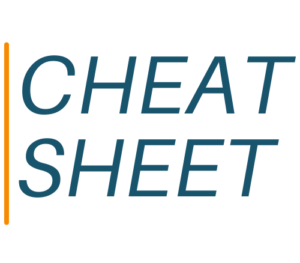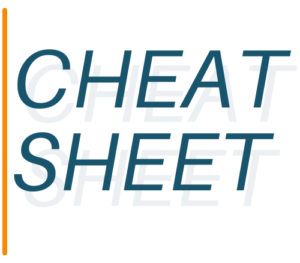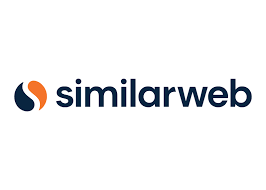
Cheat Sheet: Luxury Gift Guides
This short-and sweet cheat sheet will guide you to edit shops that produce luxury gift guides. You may get a kick out of the products and services of appeal to the rich.

This short-and sweet cheat sheet will guide you to edit shops that produce luxury gift guides. You may get a kick out of the products and services of appeal to the rich.

In B2B, design often refers to silicon and semiconductors. But just as often, it means the art and science of building elegant, successful consumer-facing products and services. This makes it challenging to build a cheat sheet…

Here are seven podcasts produced by legit experts in the design field. The podcasts are updated frequently, so there appears to be a good amount of “inventory” for you to pitch to.

You need to be logged in to view this content. Please Log In. Not a Member? Join Us

Axios and Fortune continue to be star performers in the world of Tier 1 edit, according to the latest data from Similarweb.
From June 2023 through June 2024, Axios increased its readership by 47.5 percent, from 22.5M monthly visitors to 31.1M on a trailing 12-month basis. How does Axios do it? Smart management, smart verticals, smart brevity.

It’s been more than two years since SWMS chatbot research has been updated. The June 2022 cheat sheet is now deleted; check out the 11 names in the fresh one below.

This cheat sheet was born from a valet request for reporters who are covering corporate sponsorships of the Olympics — which will come and go. Fact is, most if not all of these 11 journalists stand to cover sponsorships in general — if the deal was interesting enough.

f you represent a tech product that fits in a “back to school” category, you had better get those pitches together — the coverage is already appearing. This cheat sheet contains 11 targets, many freelance and connected to a publication’s “list and best of” operations.

At long last, here’s the SWMS cheat sheet on Forbes contributors. Listed are 66 contributors whose work appeared at least once between Apr. 26 and Jun. 5 in either the AI, the cloud and the enterprise tech section.

You need to be logged in to view this content. Please Log In. Not a Member? Join Us
YOUR ACCOUNT
FRIDGE NOTES
The day is coming that you will not be able to avoid framing the targets in terms of red or blue. So far you’ve been able to do that. Those days are coming to a close: large swaths of “the audience” are headed in this direction. If you don’t believe it, read this from Bloomberg. You will never see better reporting than this.
Superb reporting from Business Insider on what comes after Google Search. All the experts quizzed. The gist: these technologies and techniques are borderline mythical at this point.
In the latest installment of Sound Thinking...David Strom, a well-known IT reporter and security expert, discusses the threat of AI tricking security systems and luring them to catastrophe. What will that mean to editors? When will it happen? It’s not an if, it’s a when.
Good vision here from Jay Lauf. Interestingly, Jay suggests that B2B publishing will become a service business to B2B pros, providing value directly to individuals and organizations. Static content is dying very quickly. This is the point of the analysis from this great media organization.
America can’t read anymore. The good news: advertisers can advertise against different kinds of emotion in the copy. So even if the numbers of readers drop, there are more ways to attract ads. So perhaps the bad news will get cancelled out by the good. Sam Whitmore and David Strom discuss.
Can you imagine not needing to be a human being to be a superstar? You may remember Max Headroom. There’s plenty of examples of technology personas, but AI is a different world altogether. Is there a tech media angle to this item? Not really, but here she is — Xania.